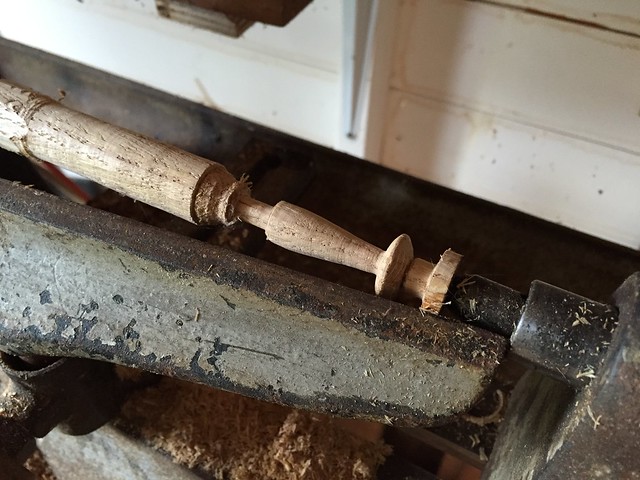EdK
Established Member
Hi everyone,
New to lathes and turning....
I have been building/renovating an old house and have made some cabinets:
bedroom-wardrobe-wip-t92229.html
I've made some out of maple in a different bedroom too. I'm about to make a kitchen in a similar style (no exact plans yet/still ).
).
Anyway, I was after some cherry shaker style knobs for the cherry wardrobe and some maple knobs for the maple wardrobe.
Also some walnut shaker pegs for a hanging pegboard in a bathroom and no doubt some knobs for the kitchen.
I've had a look online and didn't find exactly what I was after.
So I thought about buying a small lathe for turning up the knobs.
Never used a lathe - is this achievable?
I want a small quiet lathe (will be using in the house in a spare bedroom...).
I looked on Axminster and saw the hobby series:
AWSL : (£183 ex-vat : http://www.axminster.co.uk/axminster-ho ... the-501245)
AH-1218 : (£250 ex-vat : http://www.axminster.co.uk/axminster-ho ... the-505020)
AH-1218VS : (£285 ex-vat : http://www.axminster.co.uk/axminster-ho ... the-505021)
Are these suitable for turning shaker pegs and knobs (and then for general hobby use after I finish the house - whenever that will be ....)?
The cheapest is the AWSL. Is the AH-1218 worth it or the VS one? Do I need the variable speed for turning smaller diameter objects like pegs/knobs?
Can I get away with buying one or two turning tools or is a whole set better ?
Will have a read around on this site but was looking for some reassurance that one of these would do the job so I can order it as it will take some time to get here (Channel Islands).
Thanks,
Ed
New to lathes and turning....
I have been building/renovating an old house and have made some cabinets:
bedroom-wardrobe-wip-t92229.html
I've made some out of maple in a different bedroom too. I'm about to make a kitchen in a similar style (no exact plans yet/still
Anyway, I was after some cherry shaker style knobs for the cherry wardrobe and some maple knobs for the maple wardrobe.
Also some walnut shaker pegs for a hanging pegboard in a bathroom and no doubt some knobs for the kitchen.
I've had a look online and didn't find exactly what I was after.
So I thought about buying a small lathe for turning up the knobs.
Never used a lathe - is this achievable?
I want a small quiet lathe (will be using in the house in a spare bedroom...).
I looked on Axminster and saw the hobby series:
AWSL : (£183 ex-vat : http://www.axminster.co.uk/axminster-ho ... the-501245)
AH-1218 : (£250 ex-vat : http://www.axminster.co.uk/axminster-ho ... the-505020)
AH-1218VS : (£285 ex-vat : http://www.axminster.co.uk/axminster-ho ... the-505021)
Are these suitable for turning shaker pegs and knobs (and then for general hobby use after I finish the house - whenever that will be ....)?
The cheapest is the AWSL. Is the AH-1218 worth it or the VS one? Do I need the variable speed for turning smaller diameter objects like pegs/knobs?
Can I get away with buying one or two turning tools or is a whole set better ?
Will have a read around on this site but was looking for some reassurance that one of these would do the job so I can order it as it will take some time to get here (Channel Islands).
Thanks,
Ed



































